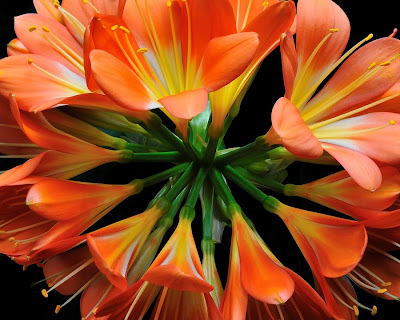Originally this species was known as Epiphyllum truncatum, and in the nineteenth-century gardening books it was always referred to by this name. Later the name was changed to Zygocactus truncatus, commonly known as the Christmas cactus, because it will flower naturally at Christmas (in the northern hemispere), given the right conditions. According to modern classification the species is now called Schlumbergera truncata, but as with many species which are widely known under a name which has been well established, it is easy enough to change the name but very difficult to get the majority of gardeners to use the new nomenclature, and consequently most gardeners still refer to the Christmas cactus by its old name of Zygocactus truncatus.
The species is a native of Brazil, but nowadays all the plants offered for sale are hybrids. Much hybridising took place in the nineteenth century and plants were usually sold as named varieties in quite a wide range of colours, such as deep rose, reddishorange, purple, and whites with coloured edges (e.g. white edged with rose, white with purple margin). Today, plants are not usually offered in named varieties and mostly only red shades are available. The Christmas and Easter cacti do not have true leaves. The leaf-like portions are really flattened stems and, as the plants grow larger, they gradually become cylindrical.
As plants grown from seed take some four to eight years to reach flowering size it is usual to buy plants already in flower which w i l l , of course, be during the winter. During the winter months plants will require a minimum temperature of 35°F (2°C) to survive, but to maintain growth require 5 5 - 6 5 °F ( 1 3 - 1 8 ° C ) .
The flowering period is during early and midwinter, after which the plants should be kept watered until late summer. During this period feed the plant with a weak liquid fertiliser, and in the summer months it is best to keep the plants outside but protected from the direct rays of the sun. The plant makes growth at the tip of each segment or pad, and as the stems grow longer they tend to droop; therefore it should be staked at an early age to encourage a more upright growth.
Watering of the plants should be discontinued at the beginning of autumn and the plants kept on the dry side until flowering buds appear, when watering should be recommenced. The purpose of withholding water is to allow the plants to rest; and it also seems to stimulate the initiation of flower buds. Bring the plants indoors at the end of the summer but keep them in a cool place until the buds are well-formed, when they should then be given warmer conditions - minimum 60°F(15°C).
The best time to repot is shortly after the plant has flowered, using a soilless compost suitable for ericaceous plants, because schlumbergeras like an acid compost. Repotting is usually only necessary every other year and the plant should be left undisturbed unless it is pot-bound. Always use the smallest size of pot possible.
This is also the best time to take cuttings. Sever the top three segments at the end of a branch, and insert Уг in (13 mm) deep in moist peat, covering the pot with a plastic dome or bag until the cutting has rooted, which should be in about three to four weeks. Allow the cuttings to dry for two or three days before inserting in the rooting medium, otherwise they tend to rot.
Rlupsalidopsts gaerineri, the Easter Cactus, with its bright red flowers, will bloom freely in the house.
 Clivia minima is a greenhouse evergreen which was first introduced to Great Britain in 1823 from South Africa. Formerly it was called Imantophyllum, but in around 1866, when a new classification was introduced, it was re-named Clivia, after Charlotte, Duchess of Northumberland, nee G i v e , who is said to have been the first to flower the plant in England. It has the common names Kaffir or Caffre lily and Natal lily, which no doubt were used when it bore its former name, but the use of these has died out now: that it has such a simple generic name.
Clivia minima is a greenhouse evergreen which was first introduced to Great Britain in 1823 from South Africa. Formerly it was called Imantophyllum, but in around 1866, when a new classification was introduced, it was re-named Clivia, after Charlotte, Duchess of Northumberland, nee G i v e , who is said to have been the first to flower the plant in England. It has the common names Kaffir or Caffre lily and Natal lily, which no doubt were used when it bore its former name, but the use of these has died out now: that it has such a simple generic name.